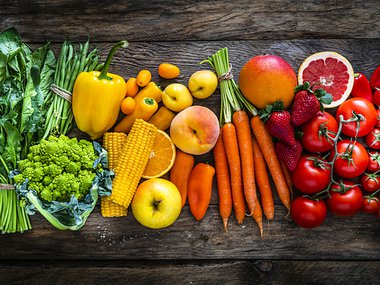Question Your World: Why Did Scientists Make Meat-Rice?
You can use it to decorate, you can starch your clothing with it and you can eat it, too! Rice: what more can this amazing food do? Some scientists are thinking it could help address our growing population’s need for sustainable nutrition.
Currently the human population clocks in at about 8.1 billion people and growing. Providing nutrition to an increasing headcount is a huge challenge considering the many variables facing our globe’s diverse population. One of the best sources of providing nutrition to humans has been meat, but meat production has become a more and more environmentally costly process over the years.
How will we provide meat for a growing population without stressing the environment along the way? To answer this question we’ll need a couple of ingredients, but the main ones are rice and science!
A team of researchers just published their results on a plant-and-meat hybrid involving rice. Using a bioengineering process, scientists recently made some rice coated with edible fish gelatin and a food enzyme mixture. The rice acts like a scaffolding while the extra gelatin coating and enzyme treatment makes the rice able to attach to cow muscle and fat components.
Effectively creating a hybrid plant-and-meat rice requires less than 12 days of growth in a lab. Bonus points: this includes nutrients from both the plant and meat portions of this food! The newly created hybrid rice also has a higher protein and fat content than regular rice.
This research helps address the growing needs of nutrition globally. If this process were to take off, it could greatly impact the amount of land and other resources used to produce nutrient-rich food options.
More than half of the world’s habitable land is used for agriculture. That’s about five times the size of the United States! This land is often made cattle-industry friendly by clearing large swaths of natural growth forest, causing a drastic imbalance in not only the ecosystem but in the global climate-capture process.
Making this meat-rice would take up much smaller amounts of land and other resources. This hybrid rice also would be a lower CO2 emissions process than raising traditional cattle. Researchers shared that the process of producing 100 grams of protein via meat-rice would output about 13 pounds of CO2, much less than traditional meat production which has an output of about 100 lbs of CO2.
There’s still a lot of testing left to see if this product could be a viable option for humanity’s future meat needs. These researchers still need to overcome some of the challenges to explore meat-rice’s true potential. Taste and texture will be a big part of the success of this product. Economics will also be vital for moving this to a larger scale production. Affordability and availability of this product will matter for its intended global impact. Lastly, this still will require consumer acceptance. Nothing is going to move forward unless there’s a demand rooted in the comfort of the consumers.
Will this rice-meat meet our needs? Only time and lots more research and testing will tell. In the meantime, it’s good to know that from making a more sustainable food option to providing nutrients worldwide, science is ready to rice to the occasion!


